NEC of America FQM6833 Digital Portable Cellular Telephone User Manual Short term Confidential
NEC Corporation of America Digital Portable Cellular Telephone Short term Confidential
(Short-term Confidential) User Manual
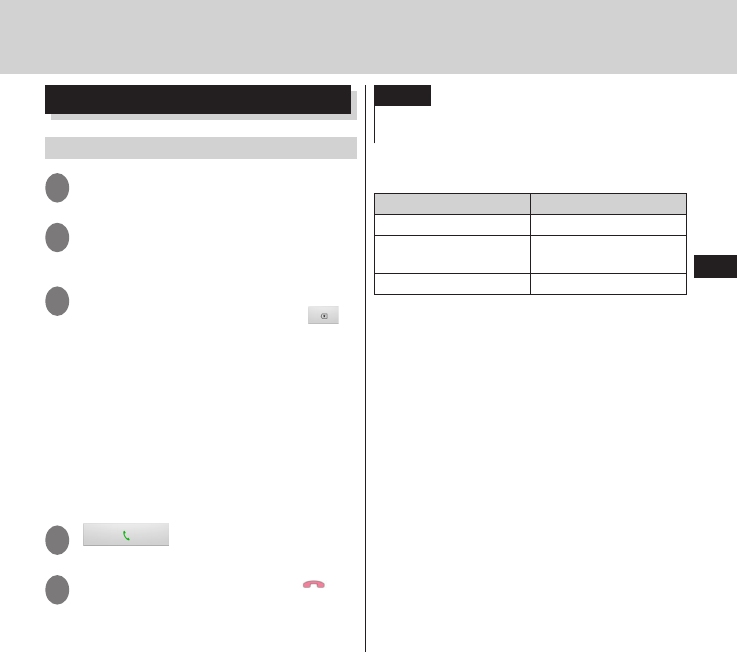
1
NOTE
"Menu key" ▶ "Add wait" ( ; ) / " Add 2-sec
pause" ( , ) to enter a push signal (pause).
■Emergency call
Emergency call Phone number
Police emergency 110
Fire brigade/Ambulance
emergency
119
Maritime distress call 118
Making/Receiving Calls
Making a call
1 From the application list screen,
"Phone"
2 "Dial"
• Tap "Favorites" to display contacts saved
to Phonebook.
3 Enter the phone number
• If you enter a wrong number, tap to
delete the number.
■Set Caller ID notification manually
▶ "Menu key" ▶ "Caller ID notification"
▶ "Notify"/"Not notify"
• You can set to notify/not notify your
number by entering "186"/"184" before
entering the number.
* Effective for that call only.
■Using Koe-no-Takuhaibin
▶ "Koe-Taku"
4 " "
5 When the call is finished, " "
Calling
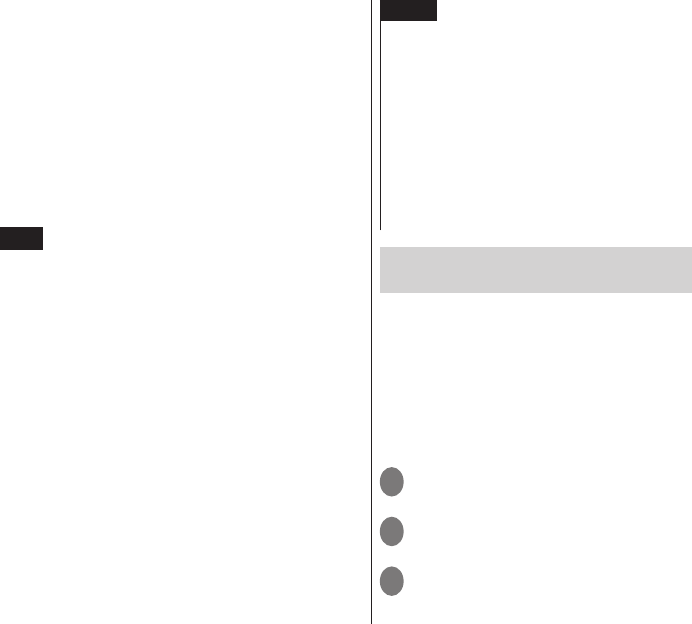
2
The terminal supports "Emergency Location
Report".
Calls made to emergency service organizations
(e.g. by dialing 110, 119 or 118) disclose
information on the caller's location to the
organization receiving the call. Emergency
service organizations may not identify the
correct location depending on the caller’s
location and the receiving condition.
The location information and phone number
are not disclosed when, before each individual
call made, "184" or another blocking prefix is
dialed first. If the information is deemed
necessary for the protection of life, etc., this
information may be acquired by the
organization being called.
Locations/timing planned for adoption of this
feature vary according to the status of the
preparations by the relevant emergency
service organizations.
When calling 110, 119 or 118 from the
terminal, first say you are calling from a
mobile phone, give your number, and state
your location clearly, because the police or fire
department may call you back for
confirmation.
Also, do not move around when making the
call. Do not turn off the power immediately
after ending the call, but leave it turned on
for ten minutes or so, so that you can receive
a call.
Depending on the area you are calling from,
you may not be connected with the nearest
police or fire department, etc.
NOTE
When you have locked the screen, you can make
an emergency call without drawing screen
unlock pattern and entering the Lock Number
for each screen. On each screen, tap "Emergency
call". The "Emergency Dialer" screen appears;
you can make phone calls only to the emergency
phone numbers.
In Japan, the 110, 119, and 118 emergency
numbers cannot be dialed when the miniUIM is
not set to it, from the PIN1 code entry screen,
during PIN code lock, PUK lock activated, or
Encryption is set.
Making an international call
(WORLD CALL)
WORLD CALL is an international phone
service that can be used from DOCOMO
mobile phones. Customers who have
subscribed to the FOMA service would also
have automatically subscribed to "WORLD
CALL" at the same time (excepting those
who have declined it).
For details on WORLD CALL, refer to
DOCOMO "International Services website".
1 From the application list screen,
"Phone"
2 "Dial"
3 Touch and hold "0"
• A plus sign "+" appears.
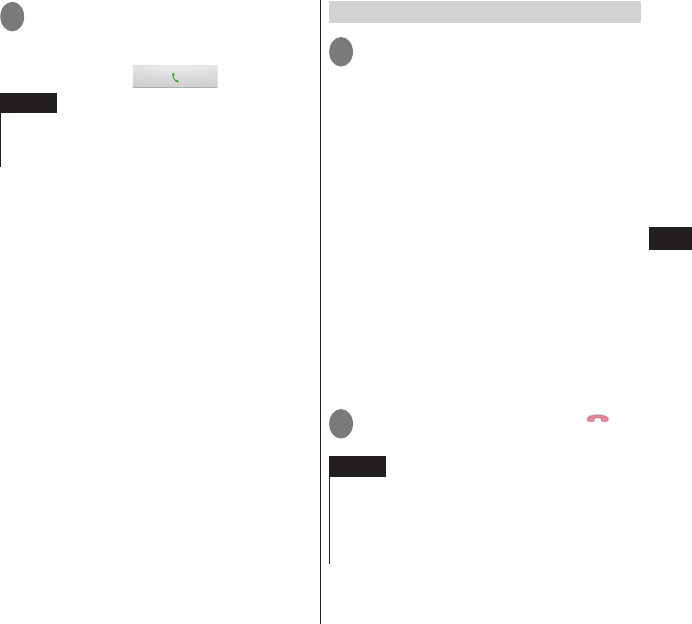
3
4 Enter the country code ▶ enter
the area code (city code) ▶ enter
the recipient's mobile phone
number ▶ " "
NOTE
If the area code begins with "0", omit "0".
However, "0" may be required for calling some
countries or areas, such as Italy.
Receiving a call
1 When a call is received,
"Activate" ▶ "Accept"
■Turn off the ring tone and the
vibrator.
▶ "Volume key up"/"Volume key down"
■Declining a call
▶ "Activate" ▶ "Reject"
■Reject call with SMS
▶ "Activate" ▶ "Reject call with SMS" ▶
tap a message.
• The selected message is sent to the other
person as SMS.
■Putting an incoming call on hold
▶ "Menu key" ▶ "On hold"
• The call is connected and immediately
placed on hold.
■Record message
▶ "Menu key" ▶ "Record message"
2 When the call is finished, " "
NOTE
If you decline an incoming call when Voice Mail
service or Call Forwarding service are set to
Activate, the call is forwarded to the Voice Mail
service center or the designated forwarding
number.
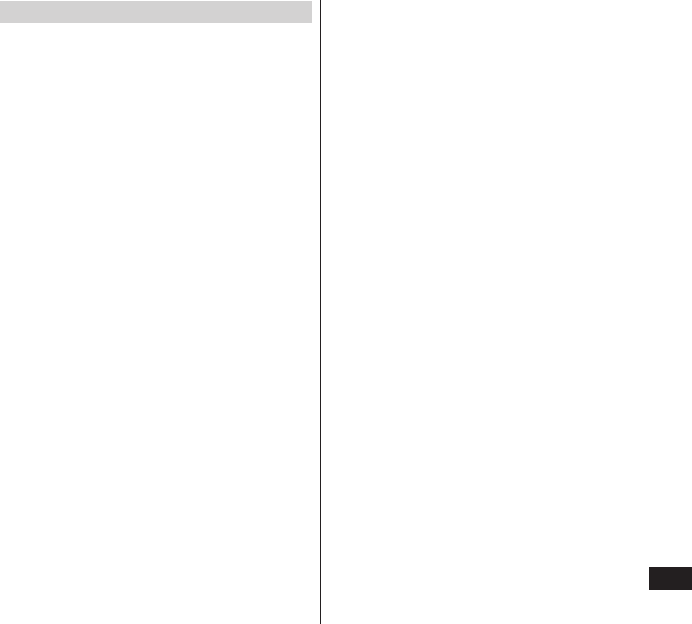
1
Before a phone model is available for sale to
the public, it must be tested and certified to
the FCC that it does not exceed the limit
established by the U.S. government-adopted
requirement for safe exposure. The tests are
performed on position and locations (for
example, at the ear and worn on the body)
as required by FCC for each model. The
highest SAR value for this model phone as
reported to the FCC when tested for use at
the ear is x.xx W/kg, and when worn on the
body, is x.xx W/kg.
(Body-worn measurements
differ among phone models, depending
upon available accessories and FCC
requirements). While there may be
differences between the SAR levels of
various phones and at various positions,
they all meet the U.S. government
requirement.
The FCC has granted an Equipment
Authorization for this model phone with all
reported SAR levels evaluated as in
compliance with the FCC RF exposure
guidelines. SAR information on this model
phone is on file with the FCC and can be
found under the Display Grant section at
http://www.fcc.gov/oet/ea/fccid after search
on FCC ID A98-FQM6833.
For body worn operation, this phone has
been tested and meets the FCC RF exposure
guidelines.** Please use an accessory
designated for this product or an accessory
which contains no metal and which positions
the handset a minimum of 1.5 cm from the
body.
Radio Frequency (RF) Signals
THIS MODEL PHONE MEETS THE U.S.
GOVERNMENT'S REQUIREMENTS FOR
EXPOSURE TO RADIO WAVES.
Your wireless phone contains a radio
transmitter and receiver. Your phone is
designed and manufactured not to exceed
the emission limits for exposure to radio
frequency (RF) energy set by the Federal
Communications Commission of the U.S.
Government. These limits are part of
comprehensive guidelines and establish
permitted levels of RF energy for the
general population. The guidelines are
based on standards that were developed by
independent scientific organizations
through periodic and thorough evaluation
of scientific studies.
The exposure standard for wireless mobile
phones employs a unit of measurement
known as the Specific Absorption Rate (SAR).
The SAR limit set by the FCC is 1.6 W/kg.*
Tests for SAR are conducted using standard
operating positions accepted by the FCC
with the phone transmitting at its highest
certified power level in all tested frequency
bands. Although the SAR is determined at
the highest certified power level, the actual
SAR level of the phone while operating can
be well below the maximum value. This is
because the phone is designed to operate at
multiple power levels so as to use only the
power required to reach the network. In
general, the closer you are to a wireless base
station antenna, the lower the output.
0.79
0.75
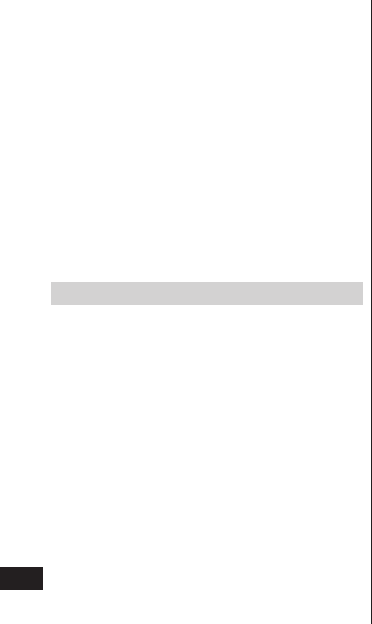
2
Non-compliance with the above restrictions
may result in violation of FCC RF Exposure
guidelines.
--------------------------------------------------------------
*
In the United States, the SAR limit for wireless
mobile phones used by the public is 1.6 watts/
kg (W/kg) averaged over one gram of tissue.
SAR values may vary depending upon national
reporting requirements and the network band.
**
For devices which include "WiFi hotspot"
functionality, SAR is measured at a distance of
1.0cm for operation of data calls as required
by FCC, and this product is shown to be in
compliance with the FCC RF exposure
guidelines.
FCC Regulations
This mobile phone complies with part 15 of
the FCC Rules. Operation is subject to the
following two conditions: (1) This device
may not cause harmful interference, and (2)
this device must accept any interference
received, including interference that may
cause undesired operation.
This mobile phone has been tested and
found to comply with the limits for a Class B
digital device, pursuant to Part 15 of the
FCC Rules. These limits are designed to
provide reasonable protection against
harmful interference in a residential
installation.
This equipment generates, uses and can
radiate radio frequency energy and, if not
installed and used in accordance with the
instructions, may cause harmful interference
to radio communications. However, there is
no guarantee that interference will not
occur in a particular installation; if this
equipment does cause harmful interference
to radio or television reception, which can
be determined by turning the equipment
off and on, the user is encouraged to try to
correct the interference by one or more of
the following measures:
Reorient or relocate the receiving antenna.
• Increase the separation between the
equipment and receiver.
• Connect the equipment into an outlet on a
circuit different from that to which the
receiver is connected.
• Consult the dealer or an experienced radio/TV
technician for help.
Changes or modifications not expressly
approved by the party responsible for
compliance could void the user’s authority
to operate the equipment.